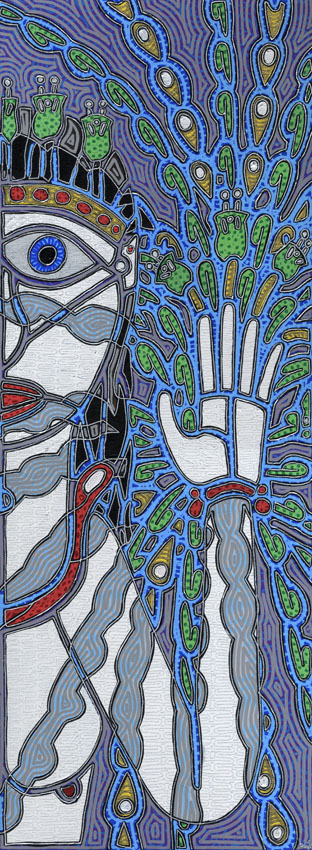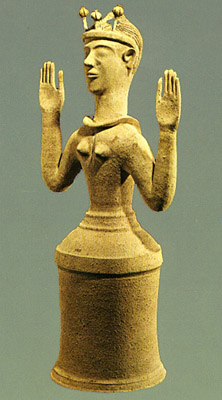:: 2011 :: 30cm x 82cm :: Acrylics, Inks & Markers on Canvas ::
Inspired by the statue of the Opium Mother (which can be seen at the base of this page) in the posture of the upraised hands found in Late Minoan times at Gazi, Crete, and another step in the search to uncover the sacrament of the labyrinth.
The presence of opium and poppy imagery in the archaeology of Crete is ubiquitous - opium-shaped oil lanterns (which in actuality are as likely to have been opium incense burners!) can be found at a significant minority of sites in east Crete across all ages down to the Classical era.
Opium usage has often been considered as indicating a degenration of the 'high' culture of Crete, but its association in the figurine with the 'goddess of upraised hands' suggests an ancient age.
This goddess is rather complexly theorised to have been a mountain deity or guardianess of the Sun of whom the mistakenly titled 'bull horns of consecration' were a symbol, and appears to have derived from a cult originally only practiced in the palaces and later passed into the general populace. Marina Moss holds that her ultimate origin can be found in the Egyptian goddess Hathor, but this is controversial.
The rationale for the above conclusions is complex but yet another forthcoming essay is being prepared...
But was opium the sacrament of the labyrinth? Possibly, because its use seems to have originated in palace cults, but its soporific qualities would not have favoured the spiral dance ritual that I also theorise in my original essay.
No, there is one more candidate...












